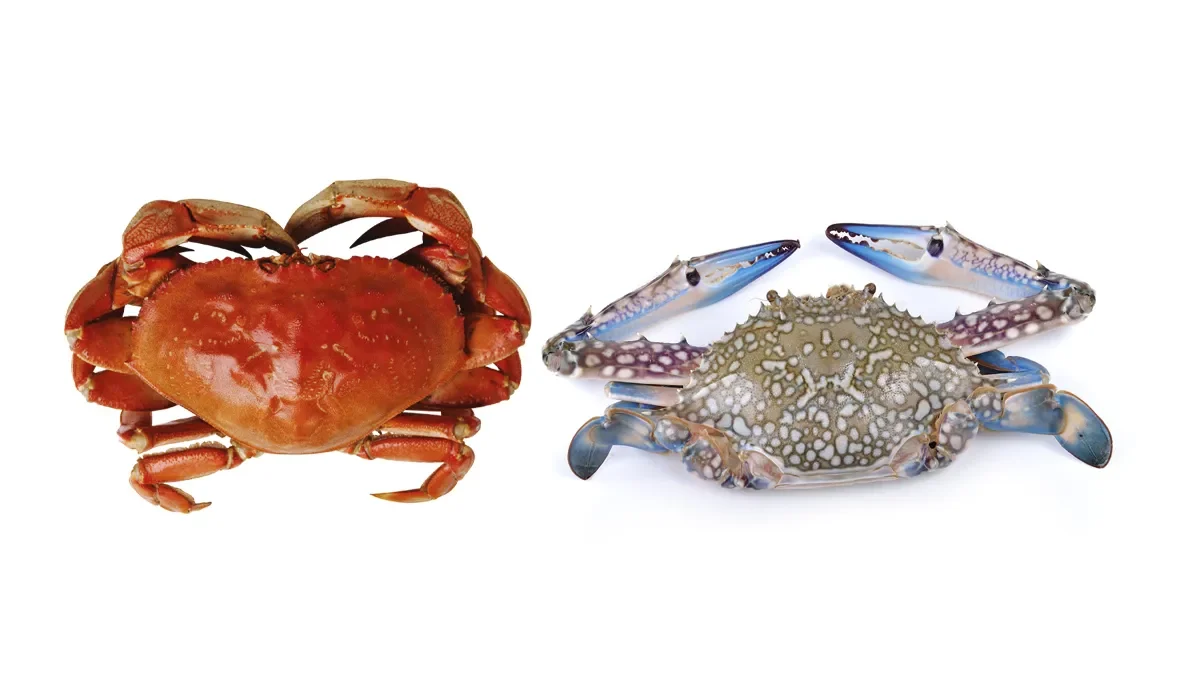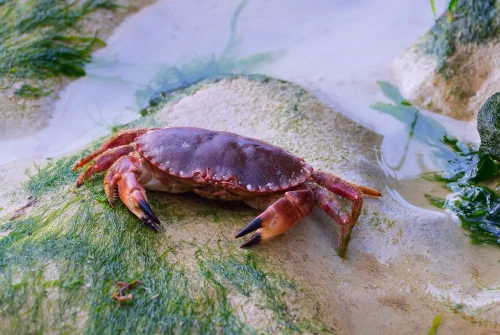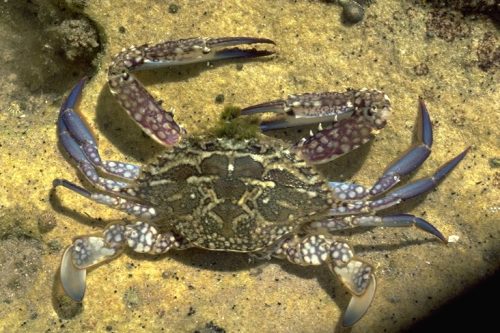Biological Differences Between Crabs and Blue Swimming Crabs, and Their Economic Value in the Fishing Industry

Crab vs Blue Swimming Crab (Photo Credit : Manggarayu)
Crabs and blue swimming crabs, two species of crustaceans, are often the subject of discussion in the world of fisheries and culinary. Both species have high economic value and play a crucial role in the global fishing industry. Although both belong to the same family, namely Brachyura, they have significant differences in terms of morphology and habitat. Crabs, with their various types and species, are known to have a characteristic in the form of a pair of large claws and a thicker body shape. On the other hand, the blue swimming crabs, scientifically known as Portunus pelagicus, are recognize for their slimmer body shape and longer claws. Before we delve further into the morphological differences between these two species, let's take a deeper look these crabs, as well as the economic value they bring to the fishing industry.
Crabs

Crab (Photo Credit : Aleksey Stemmer/Fotolia)
Crabs are members of ten-legged crustaceans of the infraorder Brachyura. The crabs have five pairs of legs, the first pair of legs is modified into a pair of claws and is not used for movement. In almost all types of crabs, the abdomen folds under the cephalothorax. The mouth of the crab is covered by a flat maxilliped, and the front part of the carapace does not form a long rostrum. Crab gills are formed from flattened plates. Crabs are found in all oceans of the world. There are also freshwater and terrestrial crabs, especially in tropical regions. Crabs function to break down and shred leaves/litter into smaller sizes (detritus) so that microfauna can easily decompose it.
Blue Swimming Crab

Blue Swimming Crab (Photo Credit : Dr Isobel Bennett)
Blue swimming crab, or scientifically known as Portunus pelagicus, is an important crustacean species in marine fisheries because it has high economic value and high market demand. Morphologically, the blue swimming crabs have a slimmer body shape with longer claws and have a variety of interesting colors on the carapace. Blue swimming crab is usually caught using fishing gear, nets, and bubu traps. The management of this crab fishery resources can be done with various options, including through the protection of essential habitats in the form of nursery grounds.
Benefits
Crabs, members of the ten-legged crustaceans of the Brachyura family, offer various benefits for human health. With five pairs of legs and a pair of large claws, crabs make a good source of protein, which is important in building and maintaining muscle. Crabs are also rich in vitamin B12 and folate, which play an important role in the formation of red blood cells and prevent anaemia. In addition, crabs also contain calcium which can help maintain bone mass and prevent osteoporosis. Crabs also contain omega-3 fatty acids that support brain function and can reduce the risk of blood clots forming and lower triglyceride levels, which means crabs are also good for heart health.
On the other hand, blue swimming crab also offer various benefits for human health. The crab is known for its slimmer body shape and longer claws. This crab contains omega-3 fatty acids that are beneficial for brain health. In addition, this crab also contains selenium minerals, omega-3 fatty acids and protein content that can protect the body from attacks by various bacteria and viruses, so as to increase immunity. Blue swimming crab also contains minerals such as selenium, zinc, iodine, potassium, phosphorus, and magnesium that play a role in maintaining electrolyte balance, strengthening the immune system, and maintaining healthy bones and muscles. Thus, blue swimming crab also have significant benefits for human health.
Economic Value
Both crabs and blue swimming crab are two species of crustaceans that have high economic value in the fishing market. Crabs, with their various types and species, have significant economic value. According to data from the Ministry of Maritime Affairs and Fisheries, Indonesia's crab exports in 2019 reached USD 90.6 million or equivalent to Rp 1.3 trillion. This figure has increased compared to the previous year which only reached USD 85.3 million. In addition, crab production in Indonesia is 101,535 tons with a value of IDR 5.04 trillion in 2022.
On the other hand, blue swimming crab also have high economic value. With selling prices reaching 70 thousand rupiah per kilogram, currently demand tends to continue to rise, especially in meeting export market demand to various countries, especially the United States. According to a report by the Ministry of Maritime Affairs and Fisheries (MMAF), in 2017 the sales value of Indonesian blue swimming crabs was only USD409.81 million or around Rp6.14 trillion (retail price Rp14,991/USD). Then its value rose rapidly to USD 613.24 million in 2021, growing 66.86% year-on-year (yoy) and is the highest record in the last five years.
This economic value demonstrates the importance of these two species in the fishing industry and also shows their potential for future economic growth. However, this economic value may change depending on a variety of factors, including market demand, product quality, and environmental conditions.

